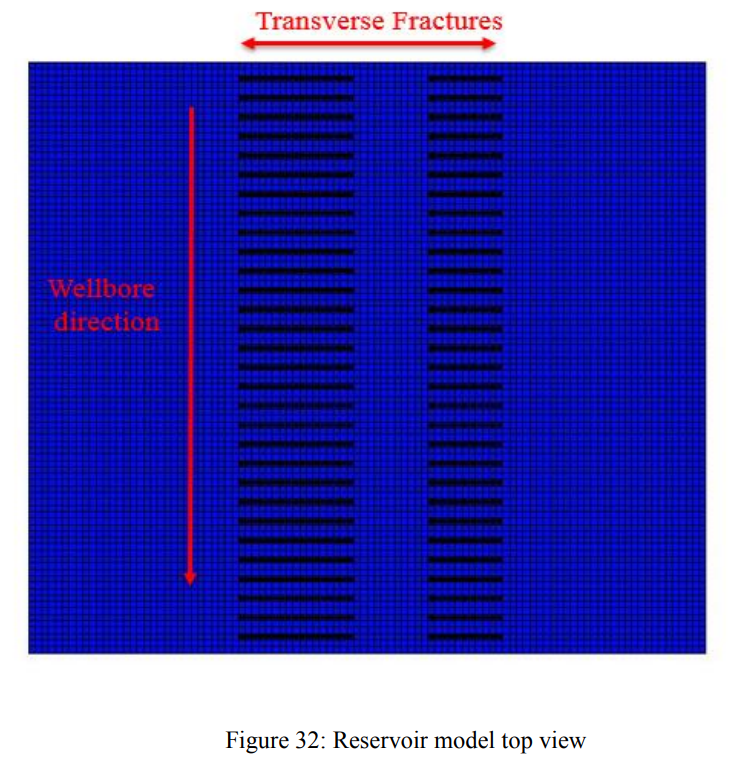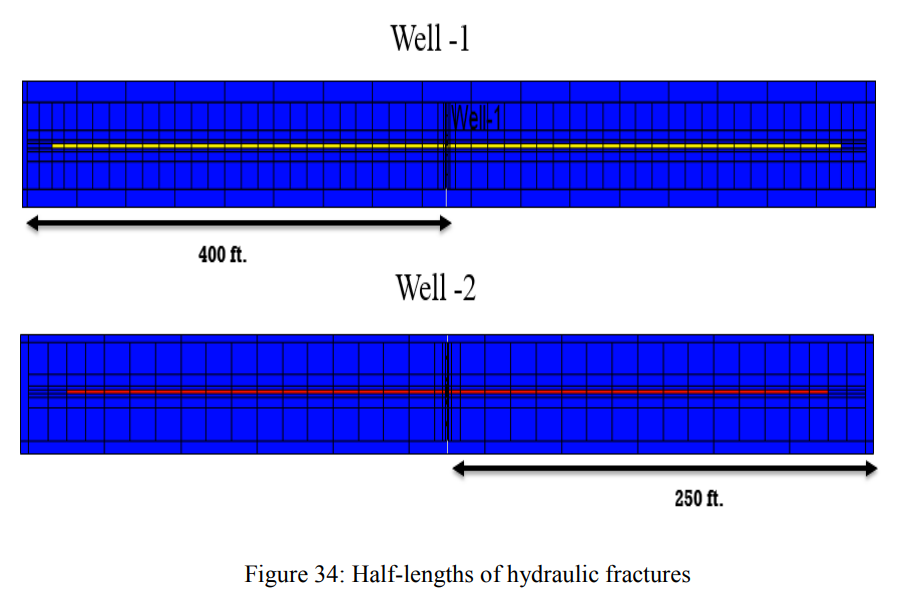RESERVOIR CHARACTERIZATION AND WATERFLOOD PERFORMANCE EVALUATION OF GRANITE WASH FORMATION, ANADARKO BASIN
阿纳达科盆地位于德克萨斯州-俄克拉荷马州边界,其花岗岩冲积储层为富液致密气藏,矿物复杂的多层致密砂岩。研究区域为Wheeler县密苏里Wash B层段,钻有两口水平井。本研究的目的是通过地质建模和数值模拟确定注水的可行性。作业公司提供了一组现场数据,并通过公开的现场研究和文献获得了其他必要参数。最终目标是模拟研究,将测井数据、PVT数据、诊断裂缝注入试验和微地震分析数据整合到开发计划中。
密苏里Wash B地层的最大有效厚度为50ft。目标砂层横向连续展布,是理想的水平钻井区域。这些井采用多级水力压裂,初始生产气油比为1800 scf/stb,PVT报告表明存在高于泡点压力的油藏。PVT相关性显示,在储层温度下,42ºAPI的油和注入水的粘度几乎相同,有利于注水。通过测井分析得到孔隙度和饱和度,微地震报告提供了完井效率的概述。通过调整实验室PVT数据,参数回归和组分并预测储层流体行为。
本研究选用CMG公司的IMEX黑油模拟器。利用敏感性研究验证了储层模型,并进行了产量历史拟合。利用偏移水平井作为注水井模拟分析了注水开发结果,讨论了三种不同的开发方案。研究表明,由于地层渗透率低,导致注水能力低,因此对注水的总体响应较差。但如果从额外的水平井开始生产,则储层驱替面积要大很多。建议在600英亩的区域,部署四口水平井。相邻井的SRV体积应彼此接近,可实现有效的储层驱替开发。
ABSTRACT
The Granite wash formation in the Anadarko basin is classified as a tight-gas play and is located along the Texas – Oklahoma border. It has a complex mineralogy and consists of stacked-pay series of tight sands. Our zone of interest is the liquid-rich Missourian Wash B interval in Wheeler County in which two horizontal wells have been drilled. The purpose of this research is to characterize the reservoir through geologic modeling and determine the feasibility of a waterflood using simulation studies.
A set of field data was provided by the operator and other necessary parameters were obtained through publicly available field studies and literature. The final objective is implementing advanced reservoir simulation to integrate well log data, PVT data, diagnostic fracture injection test and microseismic analysis into a plan of development.
The Missourian Wash B formation has a maximum net pay thickness of 50ft. The target sand is laterally continuous which makes it an ideal horizontal drilling prospect. The wells are stimulated by multi-stage hydraulic fracturing. The initial production gas oil ratio is 1800 scf/stb and PVT reports indicate presence of an oil reservoir above bubble point pressure. PVT correlations show that the 42º API oil and potential injection water at the reservoir temperature have almost the same viscosity. All these factors point towards the formation being a good waterflood candidate.
Well log analysis was performed to obtain porosity and saturation estimates. The microseismic mapping report provides a good overview of the well completion efficiency. Laboratory PVT data was tuned to predict reservoir fluid behavior by parameter regression and component lumping. An isotropic black-oil simulator by Computer Modeling Group Ltd was selected for our work. The reservoir model was validated by sensitivity studies and history matching of production rates was performed. Simulation result of waterflood implementation by utilizing offset horizontal wells as injectors is analyzed, and three different plans of development are discussed. It is seen that the overall response to waterflooding is poor due to low formation permeability leading to low water injectivity. But a greater reservoir area can be drained if production is initiated from additional horizontal wells. A well-spacing of four horizontal wells in 600 acres section is recommended. The stimulated reservoir volumes of adjacent wells should be close to each other for effective reservoir drainage.



